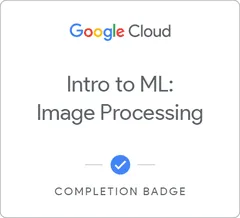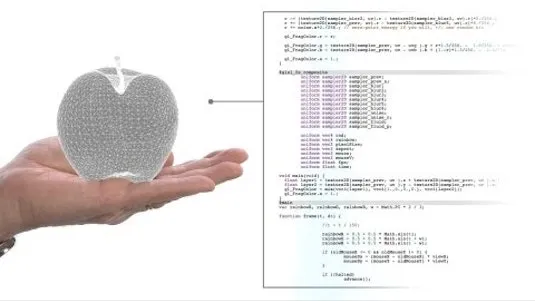
Intro to ML: Image Processing 
Discover the fundamentals of Intro to ML: Image Processing ▼
ADVERTISEMENT
Course Feature
![]() Cost:
Cost:
Free
![]() Provider:
Provider:
Qwiklabs
![]() Certificate:
Certificate:
Free Certification
![]() Language:
Language:
English
![]() Start Date:
Start Date:
On-Demand
Course Overview
❗The content presented here is sourced directly from Qwiklabs platform. For comprehensive course details, including enrollment information, simply click on the 'Go to class' link on our website.
Updated in [May 19th, 2023]
This course provides an introduction to Machine Learning (ML) and Image Processing using the Google Cloud Platform (GCP). Participants will learn how to use GCP's APIs to label images, detect faces and landmarks, and extract, analyze, and translate text from within images. Through hands-on labs, participants will gain experience with ML as it applies to image processing. By the end of the course, participants will have a better understanding of ML and its applications to image processing.
[Applications]
After completing this course, students should be able to apply the concepts and techniques learned to their own projects. They should be able to use the Google Cloud Platform to label images, detect faces and landmarks, and extract, analyze, and translate text from within images. Additionally, they should be able to use the APIs to create their own machine learning models and apply them to their own projects.
[Career Paths]
1. Machine Learning Engineer: Machine Learning Engineers are responsible for developing and deploying machine learning models. They use a variety of tools and techniques to build and optimize models, and are also responsible for maintaining and monitoring the performance of the models. The demand for Machine Learning Engineers is growing rapidly, as more and more companies are looking to leverage the power of AI and ML to improve their products and services.
2. Computer Vision Engineer: Computer Vision Engineers are responsible for developing and deploying computer vision algorithms. They use a variety of tools and techniques to build and optimize algorithms, and are also responsible for maintaining and monitoring the performance of the algorithms. The demand for Computer Vision Engineers is growing rapidly, as more and more companies are looking to leverage the power of AI and ML to improve their products and services.
3. Data Scientist: Data Scientists are responsible for analyzing large datasets and extracting insights from them. They use a variety of tools and techniques to analyze data, and are also responsible for maintaining and monitoring the performance of the models. The demand for Data Scientists is growing rapidly, as more and more companies are looking to leverage the power of AI and ML to improve their products and services.
4. AI/ML Researcher: AI/ML Researchers are responsible for researching and developing new algorithms and techniques for AI and ML. They use a variety of tools and techniques to develop new algorithms, and are also responsible for maintaining and monitoring the performance of the algorithms. The demand for AI/ML Researchers is growing rapidly, as more and more companies are looking to leverage the power of AI and ML to improve their products and services.
[Education Paths]
1. Bachelor's Degree in Computer Science: A Bachelor's Degree in Computer Science is a great way to gain the skills and knowledge necessary to pursue a career in Machine Learning and Image Processing. This degree will provide students with a strong foundation in computer programming, algorithms, data structures, and software engineering. Additionally, students will learn about the fundamentals of machine learning, including supervised and unsupervised learning, deep learning, and neural networks. As the field of AI and ML continues to grow, a Bachelor's Degree in Computer Science will become increasingly valuable.
2. Master's Degree in Artificial Intelligence: A Master's Degree in Artificial Intelligence is a great way to gain the skills and knowledge necessary to pursue a career in Machine Learning and Image Processing. This degree will provide students with a deep understanding of the fundamentals of AI, including natural language processing, computer vision, robotics, and machine learning. Additionally, students will learn about the latest developments in AI, such as deep learning, reinforcement learning, and neural networks. As the field of AI and ML continues to grow, a Master's Degree in Artificial Intelligence will become increasingly valuable.
3. PhD in Machine Learning: A PhD in Machine Learning is a great way to gain the skills and knowledge necessary to pursue a career in Machine Learning and Image Processing. This degree will provide students with a deep understanding of the fundamentals of machine learning, including supervised and unsupervised learning, deep learning, and neural networks. Additionally, students will learn about the latest developments in machine learning, such as reinforcement learning, transfer learning, and generative adversarial networks. As the field of AI and ML continues to grow, a PhD in Machine Learning will become increasingly valuable.
4. Certificate in Image Processing: A Certificate in Image Processing is a great way to gain the skills and knowledge necessary to pursue a career in Machine Learning and Image Processing. This certificate will provide students with a strong foundation in image processing, including image segmentation, feature extraction, and object recognition. Additionally, students will learn about the fundamentals of machine learning, including supervised and unsupervised learning, deep learning, and neural networks. As the field of AI and ML continues to grow, a Certificate in Image Processing will become increasingly valuable.
Course Syllabus
AI Platform: Qwik Start
In this lab you train and deploy a TensorFlow model to AI Platform for serving (prediction). Watch these short videos Harness the Power of Machine Learning with AI Platform and AI Platform: Qwik Start - Qwiklabs Preview.APIs Explorer: Qwik Start
In this lab you'll upload an image to Cloud Storage then make a request to the Vision API with APIs Explorer.Classify Images of Clouds in the Cloud with AutoML Vision
AutoML Vision helps developers with limited ML expertise train high quality image recognition models. In this hands-on lab, you will learn how to train a custom model to recognize different types of clouds (cumulus, cumulonimbus, etc.).Detect Labels, Faces, and Landmarks in Images with the Cloud Vision API
The Cloud Vision API lets you understand the content of an image by encapsulating powerful machine learning models in a simple REST API. In this lab youâll send an image to the Cloud Vision API and have it identify objects, faces, and landmarks.Extract, Analyze, and Translate Text from Images with the Cloud ML APIs
In this lab youâll combine the Cloud Vision, Natural Language, and Translation APIs to capture text strings from images, recognize characters, and analyze and translate the text strings into other languages.Course Provider

Provider Qwiklabs's Stats at AZClass
Discussion and Reviews
0.0 (Based on 0 reviews)
Explore Similar Online Courses

FBX Workflows for Blender to Unity

Interactive 3D Graphics

Python for Informatics: Exploring Information

Social Network Analysis

Introduction to Systematic Review and Meta-Analysis

The Analytics Edge

DCO042 - Python For Informatics

Causal Diagrams: Draw Your Assumptions Before Your Conclusions

Whole genome sequencing of bacterial genomes - tools and applications

Serverless Data Processing with Dataflow: Develop Pipelines

Serverless Data Processing with Dataflow: Foundations


Start your review of Intro to ML: Image Processing